#nycgolf
Text



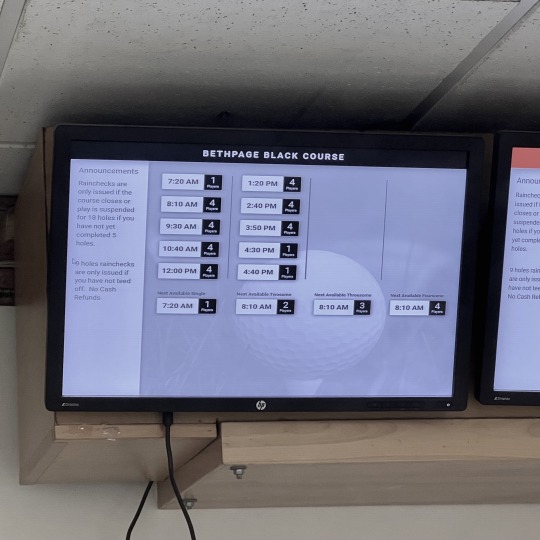

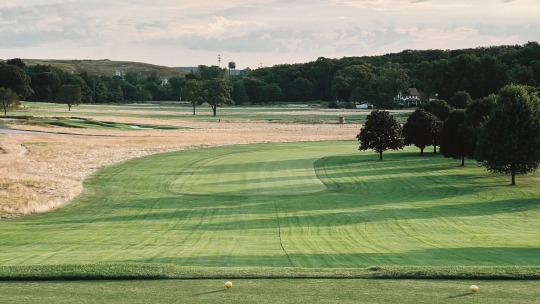
How to Camp Out for Bethpage Black
So much has been written about Bethpage Black, there's not much I could add about the course itself. Instead, this post describes the process for snagging one of the coveted tee times.
Booking a tee time online is really difficult. New York State residents can book tee times a week in advance. New times are added each night at 7:00 p.m., and in my experience, they're gone less than a second after they're posted. If you refresh your browser at just the right moment, you might get lucky ...
Otherwise, your next best option is to camp out at the course - the first hour of tee times on each of the five courses in the park are held for campers. I've done this once on a Friday in mid-August in 2022. If you're planning to give it a try, please note that I was playing as a single in the middle of the summer; the timing of your experience may be very different than mine depending on how many people are in your group and the season (the sun may rise earlier or later, which could impact when things happen).
I arrived at the course at 4:30 a.m. and parked in line. I thought I would be there in plenty of time, but it turns out 83 people arrived before me! My understanding is that people actually start lining up the night before, so if you're going with a group, you'll probably need to arrive way earlier than I did. Around 5:00 a.m., a park staff member came and handed out tickets to each person in each car in line. After I got my ticket (#84), I headed to the clubhouse and waited for my number to be called. When I arrived at the check-in counter, one spot was still available for the first tee time of the day (7:20 a.m.)!
One final thought - if you want to play the Black course, but you don't get a good spot in line, don't necessarily lose hope. Many people in line aren't there to play the Black course, so you never know what will happen when you’re called. When my number was called, there were still times available for all group sizes.
1 note
·
View note
Video
Lock that in T-Rex🦖 📹@newyorknico @trex_thebucketdrums @tigerhoodnyc . #🦖 #Trex #TigerHood #TigerHoods #NYCgolf (at SoHo, Manhattan)
2 notes
·
View notes
Photo

Pas besoin de commentaire 🙂 #golf #golfcart #golfing #GolfSpeed #golfer #golfers #golflife #golf⛳️ #golfday #putter #instruction #women #nycgolf #nyc #glof #goat #golfclubs #golfcoach #golfday #golfwang #golflove #golfcourse #lake #golfhole #autumn #golfrange #golfeur #chariotsdegolf #golfcart #golftrolley #parcoursdegolf #balledegolf
#nyc#golfing#golfers#golfrange#golflove#golfspeed#golfday#golftrolley#golf#glof#nycgolf#golf⛳️#chariotsdegolf#autumn#golfcourse#golfeur#golfer#parcoursdegolf#golflife#lake#putter#golfwang#golfcart#instruction#women#balledegolf#golfcoach#golfclubs#goat#golfhole
0 notes
Photo

William Louis Golf Polo #tiger #hero #putter #instruction #women #nycgolf #nyc #glof #goat #golfclubs #golfcoach #golfday #golfwang #golflove #golfgti #golfpro #golf⛳️ #golfers #golflessons #golfaddict #golfballs #golfwangforsale #golfisfun #golfdigest #golfislife #golfmk2 #golffitness #golfcourse #lake #golfhole #autumn #golfrange
#goat#golfballs#golfcoach#golfwangforsale#golf⛳️#tiger#golfisfun#hero#golfcourse#golfgti#nyc#women#golfmk2#golflove#golfclubs#golfers#golfpro#golfaddict#golfdigest#golffitness#golfwang#golfhole#lake#autumn#glof#nycgolf#instruction#putter#golfrange#golfday
0 notes
Video
Slow day so came out here with @jcjc3456 to work on my new clubs #nycgolf #swinger #shootermcgavin (at Chelsea Piers Golf Club)
0 notes
Text
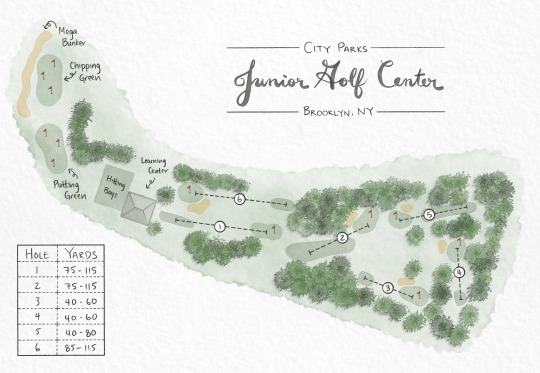




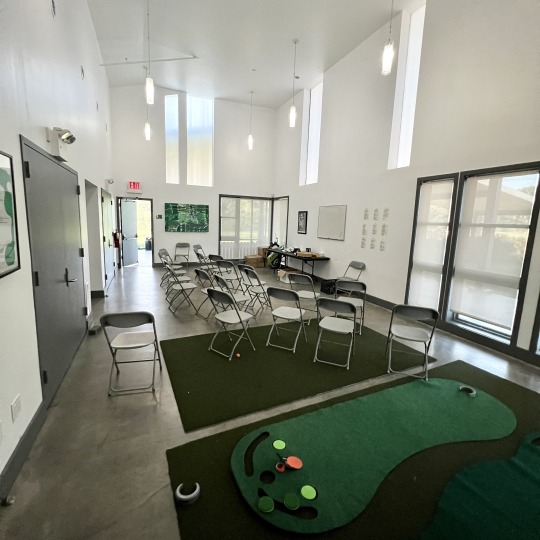

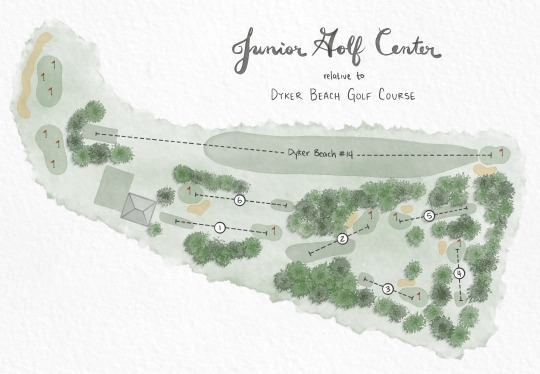
CityParks Junior Golf Center
Last year, I had the opportunity to visit the only public course in Brooklyn that I've never played - the CityParks Junior Golf Center. If you've ever played Dyker Beach Golf Course, you may have noticed the Junior Golf Center's 6th hole behind a chain-link fence that runs along the edge of Dyker Beach's 14th hole.
Simply put, the Junior Golf Center is fantastic. The facility includes a 6-hole golf course with holes ranging from approximately 40 – 115 yards; massive putting and chipping greens, including an enormous practice bunker surrounding the latter; numerous covered hitting bays; and a clubhouse learning center. The Center is open to juniors ages 6-17, and instruction and academies are available free of charge. Check the Center's website for more information about how to register.
The clubhouse includes a list of all the holes in one made at the course since 2010 – 42 in total! I wonder how many will be added to the list in 2023?
#golf#golfcourse#newyork#nyc#publicgolf#municipalgolf#juniorgolf#muni#nycgolf#golfart#golfcourseart#nycgolfcourses#golfarchitecture#brooklyn#juniorgolfcenter#cityparks
0 notes
Text

NYC Skyline as Seen from Kissena
A fantastic sunset over the 2nd green at Kissena Park Golf Course with the Manhattan skyline visible on the horizon.
#golf#golfcourse#newyork#newyorkcity#nyc#publicgolf#municipalgolf#muni#nycgolf#nycgolfer#newyorkcitygolfcourses#nycgolfcourses#golfarchitecture#golfart#photography#golfphotography#lovegolf#queens#kissena#sunset#skyline#manhattan
1 note
·
View note
Photo


CityParks Junior Golf Center - Hole 4
Last year, I posted about two holes in New York City that are strategically similar to the 12th hole at Augusta National. This follow-up post includes one additional hole that presents similar challenges – the 4th hole at CityParks Junior Golf Center. A bunker long and left of the green gathers pulled approach shots that fly too far. The hill to the right of the green kicks pushed approach shots that come up short into a former bunker area. And because the green angles from front left to back right, players must hit precise tee shots to get close to the pin.
#golf#golfcourse#newyork#nyc#publicgolf#municipalgolf#muni#nycgolf#golfart#golfcourseart#nycgolfcourses#golfarchitecture#brooklyn#juniorgolfcenter#themasters#augustanational#ANWA
0 notes
Photo


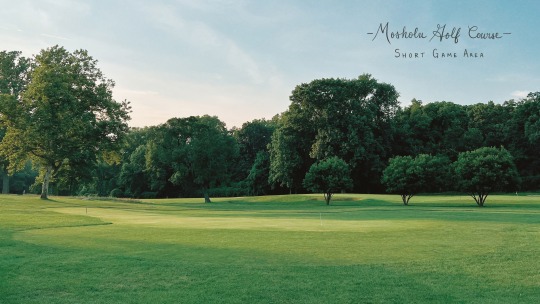


Three Places to Practice in Three Different Boroughs
In New York City, I’ve found it’s a lot harder to practice golf than it is to play golf. To that end, I’ve compiled here a list of three places to practice in three different boroughs. This post is not meant to address the City’s driving ranges, but rather the practice facilities that are available at some of the City’s courses.
In Brooklyn, Marine Park Golf Course has a driving range (approximately 175 yards long) as well as dedicated greens for putting and short game. I especially like the chipping and pitching area, where you can hit shots off grass up to about 40-50 yards.
In Staten Island, La Tourette Golf Course has an expansive driving range. At about 250 yards long, this seems to be a good place to practice longer clubs.
In the Bronx, Mosholu Golf Course also has a grass practice area. I typically head to the course when I’m looking to practice pitch shots of up to about 50 yards. I also visit when I need to work on my lag putting – the massive putting green (almost 9,500 sq ft) is about 50 yards long
If you’re looking to make a late summer push to play your best golf, one of these practice areas might be helpful to your success.
#golf#golfcourse#newyork#nyc#publicgolf#muni#nycgolf#golfphotography#nycgolfcourses#latourette#marinepark#mosholu#brooklyn#statenisland#bronx#municipalgolf
0 notes
Photo
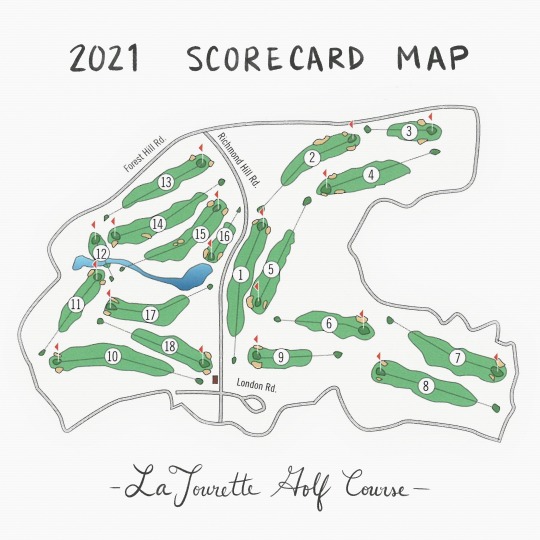
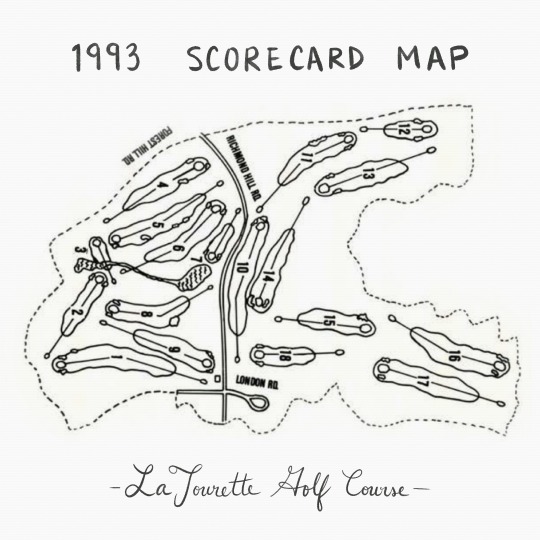
LaTourette Course Routing 2021 vs. 1993
Yesterday’s post addressed an interesting connection between Earl Woods, Tiger Woods, and the 10th Hole at LaTourette Golf Course in Staten Island. While researching for that post, I learned that the front nine holes and back nine holes at LaTourette were flipped sometime between 1993 and 2021. What Tiger’s Dad described to the New York Times as the first and ninth holes, are now the tenth and eighteenth holes. It would be interesting to know the reasoning for the change.
#golf#golfcourse#newyork#nyc#publicgolf#municipalgolf#muni#nycgolf#golfart#golfcourseart#nycgolfcourses#golfarchitecture#statenisland#latourette#tigerwoods#tiger
0 notes
Photo

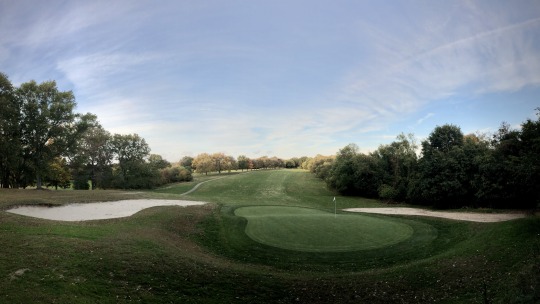

LaTourette Golf Course - Hole 10
It seems to be generally well known that Tiger’s Dad, Earl Woods, first took up golf at Dyker Beach while he was stationed at Fort Hamilton in Brooklyn. However, it was the 10th hole at LaTourette Golf Course in Staten Island that ultimately left the most lasting impact on Mr. Woods’ game.
The 10th hole is a straightaway par 5 measuring 519 yards from the back tees. There isn’t much trouble to be found, but a tee shot that is severely left will go out of bounds. A tee shot hit far to the right will land safely in the adjacent 18th fairway, though the second shot will likely be blocked out by a row of trees separating the 10th and 18th holes.
Prior to the 2002 US Open at Bethpage Black, Mr. Woods spoke with The New York Times and described one memorable experience playing the 10th hole. He said he “hit a big drive but it sliced over into the [18th] fairway,” whereas his elderly playing partner “blooped it down the middle.” He continued, “I was all over the place while she went bloop, bloop just short of the green. She chipped over a bunker to 6 inches for her par 5, then I two-putted for a 9. That's when I learned this game was all about accuracy over length.''
Mr. Woods stated that the 10th hole was where his “whole golf philosophy developed,” a philosophy he would later share with Tiger. He explained that “until [Tiger] was 13, he used a 3-wood or a 1-iron. I taught him the lesson I learned at LaTourette, that the best club off the tee is the one you can hit in the fairway.”
Tiger would most famously employ his Dad’s lesson at the 2006 Open Championship at Royal Liverpool, where he hit his driver only once during all four rounds. The R&A would later describe Tiger’s performance as “an imperious display of strategic links golf” and a “masterclass in long and mid-iron play.” As Tiger (hopefully) returns to competition in the upcoming Open Championship at St. Andrews, pay attention to his club selection off the tee. To the extent he tends to lay up more often than other competitors, it’s interesting to think that his strategy might have its origins in New York City municipal golf.
#golf#golfcourse#newyork#nyc#publicgolf#municipalgolf#muni#nycgolf#golfart#golfcourseart#nycgolfcourses#golfarchitecture#statenisland#latourette#britishopen#theopen#standrews#tigerwoods#tiger
0 notes
Photo
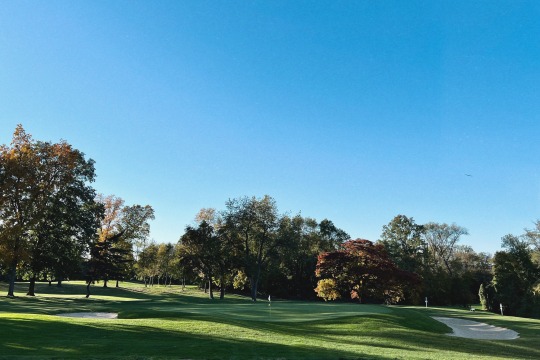
Mosholu - 8th Hole
The 8th green at Mosholu Golf Course in the Bronx from the right green-side rough.
#golf#golfcourse#newyork#nyc#publicgolf#municipalgolf#muni#nycgolf#golfart#golfcourseart#nycgolfcourses#golfarchitecture#bronx#mosholu#golfphotography
0 notes
Photo


I’ve been meaning to make the short trip across the Hudson River to Jersey City to play the nine-hole Skyway Golf Course, which opened in 2019. While it’s located outside of the five boroughs, I really wanted to see the views of lower Manhattan from the course. The views of One World Trade Center were amazing. Pictured here is the skyline as seen when standing behind the second green and from the third fairway.
#golf#golfcourse#newyork#nyc#publicgolf#municipalgolf#muni#map#nycgolf#golfart#golfcourseart#newyorkcitygolfcourses#nycgolfcourses#golfarchitecture#jerseycity#skywaygolfcourse#oneworldtradecenter
0 notes
Photo



Forest Park Golf Course - Hole 5
The 5th hole at Forest Park Golf Course in Queens is one of the most severe doglegs in the City. Typically, doglegs offer players a choice: try to hit, in the words of Bernard Darwin, a “long and daring driver” along the curve of the hole to leave a short approach shot, or play a tee shot safely down the middle leaving a longer second shot. No such choice is available on the 5th hole, though, because the trees to the right of the tee are simply too tall and dense to try to cut the corner. Instead, to reach the green in regulation, players must hit two long and straight shots, each approximately 200 yards. The second shot is especially demanding due to the severe slope that guards the left side of the hole and the hazard that runs along the right side of the fairway and green.
#golf#golfcourse#newyork#nyc#publicgolf#municipalgolf#muni#map#nycgolf#golfart#golfcourseart#newyorkcitygolfcourses#nycgolfcourses#golfarchitecture#queens#forestpark
1 note
·
View note
Photo

Straphanger Series Part 2 - 7 Train to Flushing Meadows Pitch & Putt
This is the second installment of a four-part series detailing the four courses in New York City that stuck out to me as the easiest to access via public transportation. For the purposes of this series, I’ve illustrated the trips to these courses from central Manhattan (either Times Square or Grand Central Station).
Flushing Meadows Pitch & Putt is located in Flushing Meadows Corona Park in Queens. Straphangers can catch the 7 train at Grand Central and ride 17 local stops (generally about 30 minutes) to Mets-Willets Point station (if you catch the train running express, you cut a fair amount of time off the trip). While walking from the subway station to the clubhouse you'll see Citi Field, home of the New York Mets, as well as the US Open’s USTA Billie Jean King National Tennis Center, including Arthur Ashe Stadium.
#golf#golfcourse#newyork#nyc#publicgolf#municipalgolf#muni#map#nycgolf#golfart#golfcourseart#newyorkcitygolfcourses#nycgolfcourses#golfarchitecture#flushingmeadowspitchandputt#queens#manhattan#mta#subway
1 note
·
View note
Photo

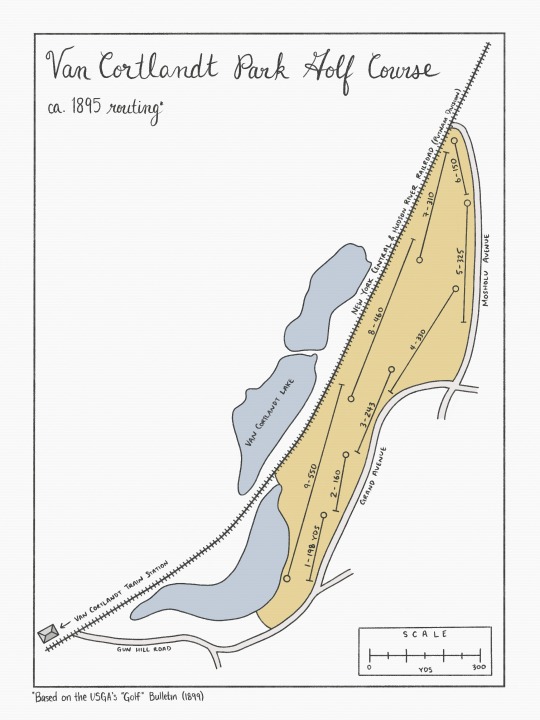


Did Van Cortlandt have a 700-yard Hole in 1895?
Of all the things I read about Van Cortlandt’s original layout in 1895, one fact stood out in particular – the original ninth hole was said to be 700 yards long! According to the USGA and R&A’s 2020 "Distance Insight Report," recreational women and men hit drives approximately 75-100 yards and 100-150 yards, respectively, circa 1900. Based on these data, I wondered if the 700-yard number was an exaggeration. Adding to this doubt, I found two contemporaneous descriptions of the original routing that appeared inconsistent as to the length of the final hole.
The routing of the original nine holes at Van Cortlandt roughly formed an upside-down “U” shape (see diagrams above). Holes eight and nine, which ran end-to-end in the same direction for approximately 1000 yards, combined to form the final straight line of the “U”. Based on this design, there was a zero-sum relationship between the length of the two holes. In other words, if the ninth hole was really 700 yards long, the eighth hole could only be about 200-300 yards.
In November of 1896, "The Sun" newspaper published a detailed description of all nine holes at the course. With respect to number eight, listed as 246 yards in a map accompanying the article, the paper wrote: “A long driver should have a great chance from this tee, which is on a slight elevation. There are two of the dirt bunkers on the way to the eighth hole – one close to the tee, which will trap a hooked or pulled drive, and another one close to the green, which is not particularly dangerous. A good score would be a five.”
With respect to number nine, the paper wrote: “A long stretch of rolling turf, crossed by two stone walls and spotted by a dirt bunker near the green, is in view from the ninth tee. The hole is 700 yards, the longest in the United States. The Van Cortlandt record is said to be seven for this hole, which must have been done by clever golf. The drive, unless topped, should clear the first stone wall and a brassey shot come close to the second. Another brassey, or a full swing with a cleek, will get well over the second wall. Unless it goes to the right and into the lake or the tall grass on the bank the lie will be good. If the three shots averaged 180 yards each there will still be 160 yards to play. The attempt should be to get over the bunker, or by it, with either a brassey or cleek, which will leave a margin of three shots to make the hole in seven.”
In May of 1899, the USGA also published a description of each hole at the course in its official bulletin, "Golf." The article described how each of the original holes would be changed when the course expanded from nine to eighteen holes. The USGA’s report of holes eight and nine differs significantly when compared to the analysis in The Sun.
With respect to number eight, the USGA wrote: “The fifteenth – the present eighth – will have a cup bunker with extended ends, guarding the green, which, like its predecessor, will be moved some yards to the left. And, except that the ground to the right will be cleared, there will be no further changes.” The map accompanying the article lists the fifteenth hole as 460 yards. Nothing in the USGA’s description suggests that the eighth hole was only 246 yards long, or that the original hole would nearly double in length during the remodel.
With respect to number nine, the USGA wrote: “At the sixteenth – the present ninth – the sand bunker already spoken of at the sixth hole will trap pulled balls, while a crescent-shaped sand bunker in place of the present one, will guard the green.” The accompanying map lists the sixteenth hole as 550 yards. Nothing in the article suggests that the original hole was purportedly the longest in the United States at 700 yards, or that it would be shortened by more than 150 yards when the course was renovated, facts the otherwise detail-oriented author surely would have referenced.
It's difficult to compare the description in The Sun vis-à-vis the analysis by the USGA. Both articles appear to contain detailed and first-hand accounts of the original course layout. With no reason to doubt the credibility of either description, it makes it all the more confusing that the descriptions of the final two holes are so dramatically different in the two publications.
After reading through discussions on Golf Club Atlas, I have one theory about what could have caused the discrepancy between the publications. The two articles were published approximately two-and-a-half years apart. It’s possible that in the intervening years, the original nine holes were renovated. My hunch is that while the original 9th hole may have initially stretched 700 yards, it was significantly shortened to about 550 yards sometime between 1897 and 1899. While a 700-yard hole might sound exciting, given the distance players hit the ball at that time, it was likely a monotonous experience to actually play the hole (albeit with multiple rock walls serving as interesting obstacles).
If anyone has any information regarding the original 9th hole, please let me know. I’d love to find out if my hypothesis is accurate.
#golf#golfcourse#newyork#nyc#publicgolf#municipalgolf#muni#nycgolf#golfart#golfcourseart#nycgolfcourses#golfarchitecture#bronx#vancortlandt#usga
0 notes